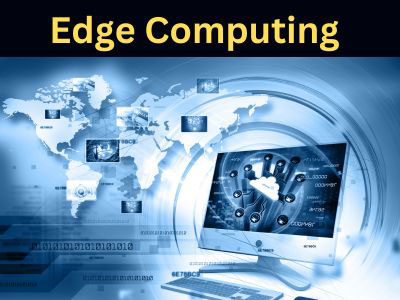Key Takeaway
One major challenge of IoT edge computing is ensuring security. Distributed devices are vulnerable to physical and cyber threats.
Other challenges include limited computing resources, scalability, and managing real-time data processing efficiently in a decentralized system.
Data Synchronization Across Distributed Devices
Data synchronization across distributed devices is a crucial aspect of ensuring the smooth operation of edge computing systems. In a distributed network of IoT devices, data is generated, processed, and stored at different locations. To ensure that all devices operate cohesively, it is essential to synchronize the data between them, ensuring consistency and accuracy across the system.
Edge computing can help with data synchronization by enabling real-time processing and communication between devices at the edge of the network. For example, in a smart factory, multiple machines may be running simultaneously, each generating data related to their performance. Edge computing can collect, process, and synchronize this data in real time, allowing all machines to work in harmony and ensuring that any issues or anomalies are immediately detected and addressed. By reducing the need for cloud-based synchronization, edge computing minimizes latency, enhances the accuracy of data, and ensures that devices are always working with the most up-to-date information.

Ensuring Security in Decentralized Environments
Security in decentralized environments like edge computing poses unique challenges. Unlike centralized systems, edge devices operate in diverse locations, increasing the attack surface for malicious actors. From physical tampering to cyberattacks, vulnerabilities can arise at multiple points in the network.
A common issue is securing data during transmission between edge devices and cloud systems. Encryption protocols, such as TLS, are essential for protecting sensitive information. Additionally, implementing zero-trust architectures ensures that every device and user is verified before accessing the network.
Engineers also need to focus on securing the firmware and software of edge devices to prevent unauthorized access. Regular updates and patches are critical to address newly discovered vulnerabilities. Tools like secure boot mechanisms and hardware security modules (HSMs) further enhance the safety of decentralized systems.
Understanding these security measures is vital for engineers tasked with deploying edge solutions. By prioritizing robust security practices, they can safeguard decentralized environments against evolving threats.
You May Like to Read
Limited Computational Resources in Edge Systems
Edge devices, while efficient, often have limited computational resources compared to cloud systems. Since edge computing involves processing data locally, edge devices are typically constrained by factors like processing power, storage, and energy consumption. These limitations can pose challenges for applications that require complex data analysis.
For example, in AI-powered IoT applications, like facial recognition or predictive analytics, edge devices may struggle to process and analyze large datasets in real-time. To overcome this, edge systems may need to offload heavy tasks to the cloud or leverage specialized hardware like edge AI processors to enhance computational power.
High Costs of Implementing Edge IoT Solutions
Implementing edge computing solutions in IoT systems often involves high upfront costs, especially for organizations that are transitioning from traditional cloud-based models. The costs of edge hardware, such as sensors, gateways, and edge servers, can be substantial. Additionally, deploying these devices across numerous locations requires investment in infrastructure and network connectivity.
Another factor contributing to the high costs is the need for specialized software and middleware to manage edge devices, process data, and integrate with the cloud. This includes purchasing software licenses, training personnel, and maintaining security measures.
Despite the high initial costs, edge computing can deliver long-term cost savings by reducing the volume of data transmitted to the cloud, lowering bandwidth costs, and enabling real-time data processing, which minimizes operational downtime and enhances productivity.
To manage the high costs, companies should conduct a thorough cost-benefit analysis and explore options like cloud-edge hybrid models, where edge computing is used only for time-sensitive data, while non-critical data is processed in the cloud.
By carefully considering the financial implications and focusing on long-term savings, businesses can optimize their investments in edge computing and unlock the full potential of IoT systems
Balancing Scalability and Performance in IoT Edge
As IoT ecosystems grow, the need to balance scalability and performance in edge computing systems becomes crucial. To handle the increasing number of connected devices, edge systems must be able to scale efficiently without sacrificing performance. One way to achieve this balance is by distributing workloads across multiple edge devices, which can then process data locally before sending it to the cloud for more extensive analysis if necessary.
Edge computing platforms will increasingly incorporate modular architectures that allow businesses to add more devices as needed while maintaining high levels of performance. This enables organizations to scale their edge networks without facing significant performance bottlenecks. Additionally, advancements in AI and machine learning will help optimize performance by allowing edge systems to learn from patterns and adjust their operations dynamically to meet changing demands.
Conclusion
In conclusion, a key challenge in IoT edge computing is ensuring interoperability between diverse devices and platforms. With various IoT devices and technologies operating on different standards, seamless integration can be difficult. This challenge needs to be addressed to fully unlock the potential of edge computing in IoT applications.
To overcome this, advancements in standardization, middleware solutions, and the development of common communication protocols will play a crucial role. As these improvements unfold, IoT edge computing will become more efficient, allowing organizations to deploy IoT solutions more easily across multiple devices and ecosystems.
